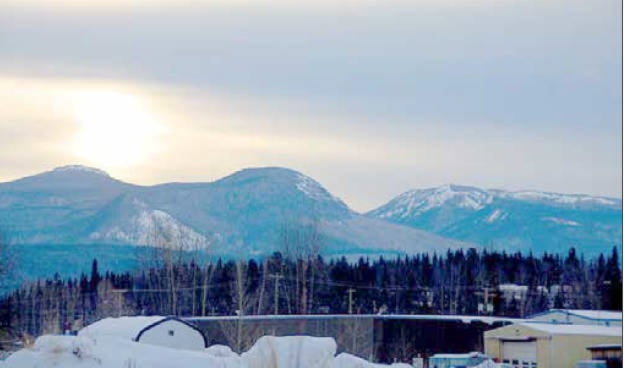Environment ministry officials have issued eight air quality advisories as of Feb. 28, far exceeding just the one issued for all of 2018.
A combination of industrial activity and this winter’s climate patterns which featured high pressure ridges and lack of wind to disperse fine particulate matter are all contributing, says an environment ministry meteorologist based in Smithers.
“When you have inversion layers, there’s a lack of wind speed,” said Ben Weinstein.
The geographic location of an industry or community can also play a role when combined with weather patterns.
The provincial air quality objective is 25 micrograms of fine particulate matter per cubic metre and on Feb. 28, the level in Houston was 35 micrograms.
At that level, people with breathing and other medical conditions are told to take precautions, including avoiding strenuous exercise.
The Feb. 28 advisory was lifted the next day because of changing weather conditions.
Information posted by the environment ministry and the Northern Health Authority advises people with chronic conditions to also stay indoors.
“Exposure is particularly a concern for infants, the elderly and those who have diabetes, and lung or heart disease,” the information indicates.
As is customary with air quality advisories, the District of Houston issued an accompanying notice, banning the use of woodstoves unless it is the only source of heat in a dwelling.
That ban falls in line with a District of Houston bylaw.
Residents were also asked to voluntarily not use fireplaces unless, as is the case with a woodstove, the fireplace is the only source of heat in a dwelling.
And if a woodstove or fireplace is used, residents were being advised to burn only dry wood and to ensure there is plenty of air for a cleaner burn.
In addition to industrial emissions and woodsmoke, automobiles, trucks and rail traffic also contribute to air quality issues.
As it is, Houston and area has consistently been in the “red zone” of air quality over the years by exceeding provincial objectives for air quality standards.
“With Houston being in the “red zone”, this is not unexpected, given the history,” said Weinstein of the number of advisories so far in 2019.
“It’s getting better, but there’s a ways to go.”
Based on data collected, Houston ranked 14th out of 17 communities exceeding fine particulate levels on average in 2017, second out of five communities in 2016 and first out of 15 communities in 2015, indicates information published by the B.C. Lung Association.
“Outside of the wildfire season, the highest [fine particulate] levels continue to be observed in Valemount, Houston and Vanderhoof which typically see elevated levels during stagnant wintertime periods,” the association noted in its 2017 annual report.
